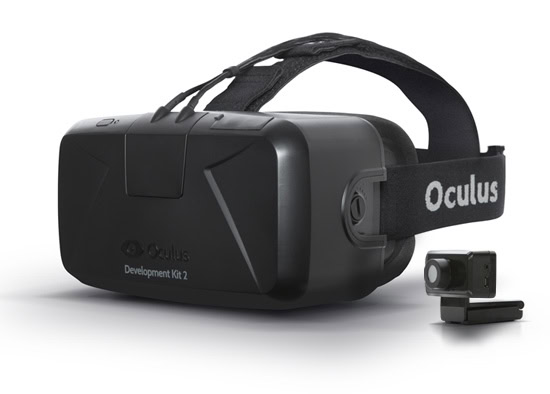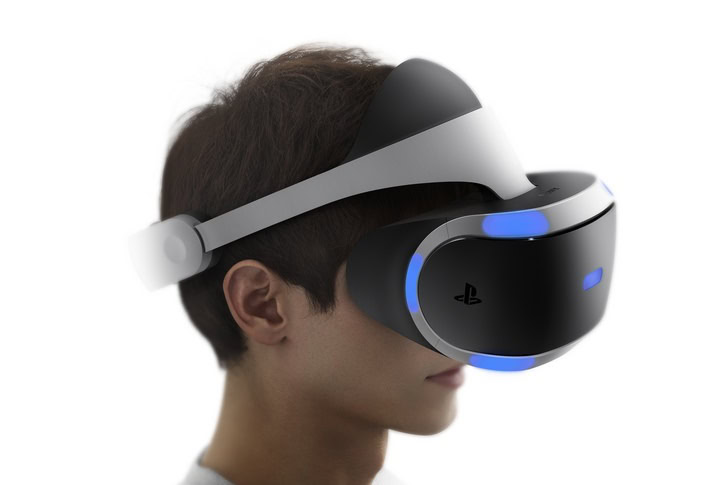Affiliate links on Android Authority may earn us a commission. Learn more.
What is Virtual Reality, and what role will Android play?
Virtual Reality (VR) is an immersive computer system that mimics the world we see around us. It can also be used to create imaginary worlds, or in other words it can be used to create immersive games. VR isn’t a new idea, in fact it was first described in the 1930s, and the first VR system was built in the late 1960s. Its boom time came in the 1990s with companies like Sega and Nintendo started developing consumer level VR gaming products. However after a boom, there is often a bust. And that is what happened to VR. Sega’s product was never release, and Nintendo’s Virtual Boy was a commercial failure.
Since then very little has happened at a consumer level. The reasons for VRs failures in the 1990s were not only to do with computing power. Think back to the size and design of laptops and mobile phones in that era. To make VR headsets truly useful the technology in terms of miniaturization, displays, materials and computing power needed to improve.

After almost 20 years VR is now making a come back. In 2012 Palmer Luckey launched a Kickstarter campaign for an immersive virtual reality headset for video games. The Oculus Rift project aimed to raise $250,000, but actually raise $2.4 million.
In late 2013 John Carmack, famous for his 3D game series like Doom and Quake, joined Oculus. The Oculus Rift is designed to be connected and used with a PC, however Carmack helped Oculus develop a mobile version in collaboration with Samsung.
[related_videos align=”center” type=”custom” videos=”592175,522432,397856″]
The Samsung Gear VR uses a smartphone which is clipped into a headset to create a VR platform. It is an untethered solution which means there are no wires connecting it to a PC or other computing device. The smartphone’s GPU is used to render the virtual world and the phone’s display is split in half for the images needed by the left and right eyes. The headset includes the head-tracking module from the Oculus Rift.
The original Gear VR only worked with the Note 4, however Samsung recently released a new version to coincide with the launch of the Samsung Galaxy S6. Both these Gear VR versions carry the title “Innovator Edition”, meaning that they are intended for early adopters and developers. However, during a recent keynote speech at GDC, John Carmack said that the Gear VR would become a true consumer level product this year and he hinted strongly that this would happen with the release of the Note 5.
The other two big players in the reinvigorated VR market are Sony and Microsoft. In 2014 Sony announced Project Morpheus a virtual reality headset for the PlayStation 4. The headset, which is reported to be able to do graphics are 120 frames per second (fps) is set to be released during 2016. Unlike Project Morpheus, Microsoft’s product, the HoloLens, is an untethered headset that will work with Windows 10. It is different from the Gear VR in that the HoloLens comes with its own built-in computing module and doesn’t use your smartphone. It is also different in that it doesn’t use a OLED display placed directly in front of the user’s eyes, but rather it uses transparent goggles with a form of projection/head-up display type system. This is where we cross the line between Virtual Reality and Augmented Reality (AR).

Although VR and AR might look similar, because you need to wear a headset or some form of special goggles, they are in fact quite different and have different goals, and ultimately different consumer markets. Before leaving AR, I want to mention Epson’s Moverio Smart Glasses, unlike Google Glass, the Moverio Smart Glasses don’t try to be a normal pair of everyday glasses, they are instead designed for tasks that need AR. But like Google Glass, the Moverio glasses use Android!
Android
As we can see with the difference between the Oculus Rift and the Gear VR, today’s Virtual Reality market is split into two segments: tethered and untethered. The advantage of the tethered approach is that the processing power and the electrical power comes from a PC or console. These machines have high performance CPUs and GPUs, and don’t need to worry about battery life. However the disadvantage is that they are generally fixed to one room in your house. The advantage of untethered VR is that it is truly portable. Wherever you go, your VR headset can go with you. It also means it has a greater social impact. Although using a VR headset could be considered as anti-social if used in public, there is the aspect of sharing the VR experience within a group of friends. For example, the “WOW” factor when the headset is passed from one person to the other.
It looks like both the tethered and untethered markets will grow and co-exist together. Ultimately there maybe some form of convergence as the headsets become more universal and can be driven by different devices.
And this is where Android has an important role to play. The Gear VR is an excellent example of what can be done using Android. Since Android is based on Linux, it is a full multitasking operating system. It is just as capable as performing VR task as any OS, from Windows to the bespoke operating systems found in consoles. Also, since it is a mobile operating system it is already optimized for untethered use cases.
The Gear VR isn’t the only Android VR solution. At the lower-end is Google Cardboard. Designed as a way to get people interested in VR, the Google headset is made from cardboard. This means it is cheap and you can get a headset for under $20. Of course, it isn’t the most ergonomic design in the world and it probably isn’t that comfortable for long periods. However, as a way into VR, Cardboard is great. Google currently has about 50 apps in its Featured Cardboard Apps section on the Play Store.
Challenges
The challenges for untethered VR are different to those of tethered VR. For devices like the Oculus Rift the obstacles are more to do with getting games out into the market so that the headset will become a de facto standard for VR gaming. Of course, there are still technical issues, however a lot of the issues that plagued VR back in the 1990s have been overcome.
For untethered VR the challenges are quite different. First, the headset doesn’t have a mains power supply, everything needs to be battery based. That means that power consumption will always be a factor. Second, the current crop of untethered VR headsets like Google Cardboard and Gear VR rely on the screen built-in to your smartphone. This affects the picture quality, refresh rates and resolution.
Also with untethered headsets the GPU in the smartphone is being used to generate the virtual world. Although mobile GPUs are sophisticated bits of hardware, they aren’t up to the same quality and speed as the graphics cards we find in PCs. And that is normal, have you seen the size of the graphics card in your PC!
What this means is that VR headset makers are now pushing the boundaries for mobile graphics. VR developers are looking for greater frames per second and higher mobile GPU performance.

The other challenge for VR is motion sickness. The failures of VR technology in the 1990s set back the VR industry by 20 years. If the current range of VR products fail to meet expectations then it could be another 20 years before anyone takes VR seriously again. And one major concern for VR OEMs is motion sickness. Your brain is an incredible thing and it isn’t easily fooled. When your inner ear detects motion but your eyes don’t see the same motion then you start to feel sick. You may have experienced it on a boat or in a car.
The same can occur when using VR headsets, and is sometimes referred to as “simulator sickness.” If your brain detects that you have moved your head but your eyes don’t see the same movement then some people can feel sick. Also some people feel sick when your eyes detect movement but there is no corresponding physical movement.
VR headsets makers like Oculus are very aware of this problem and are treating it seriously. In fact when the Gear VR hits the mainstream it will have its own app store, and apps which could cause motion sickness will be very clearly labelled.
Wrap-up
This is an exciting time for VR. There are some big names backing a new range of products, and the problems of the 1990s in terms of technology and pricing seem to have been solved. VR will also be a driving force behind new technology in terms of motion tracking, movement sensors, optics, display and mobile GPUs. The only downside that I can see is when the lawyers start getting involved and the different VR companies start suing each other for patent violations.